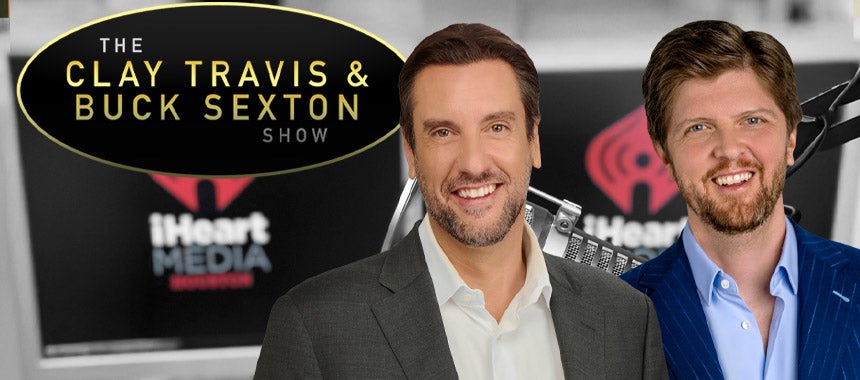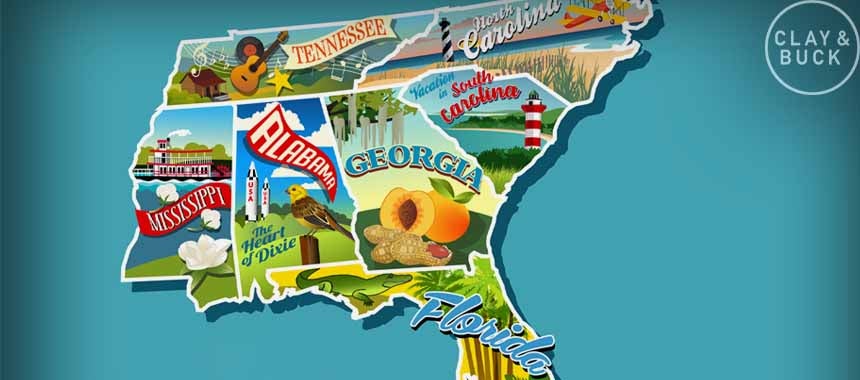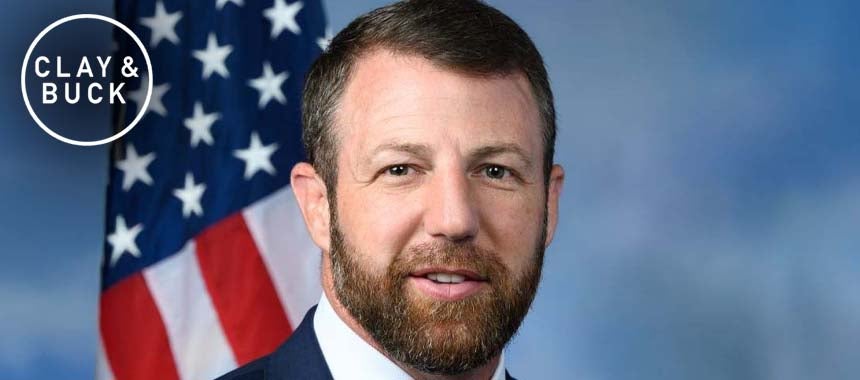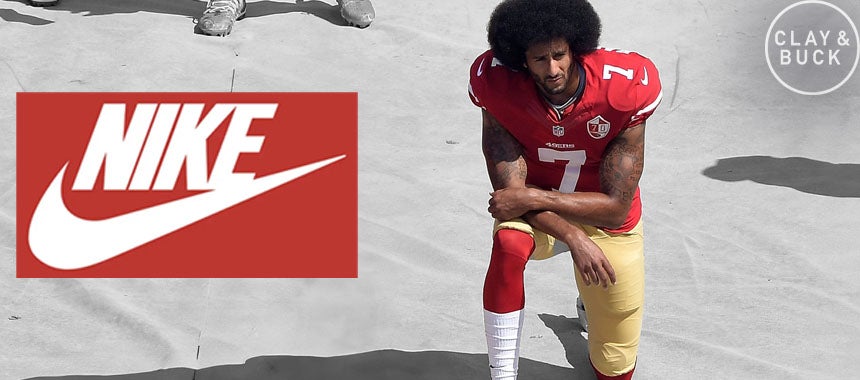C&B Welcome Real-Life Top Gun Fighter Pilot Joe Flatley
10 Jun 2022
BUCK: We loved the movie Top Gun: Maverick, as you all know, and we said, “You know, we should get somebody who actually knows something — knows a whole heck of a lot — about flying.” Joining us now is Joe Flatley. He was a real-life Top Gun fighter pilot instructor. He’s a third-generation naval aviator, retired Navy F-18 strike and fighter pilot and F-5 adversary pilot. Joe, thanks for calling in to Clay and Buck. We appreciate it.
FLATLEY: Oh, yeah. Glad to be here. Thanks for having me.
BUCK: So, you actually were the guy — or among the guys, I should say — training folks in Top Gun. What was some of the best stuff that you saw in the movie? I mean, in terms of the flying, the way they depicted the program? We just want to know, what did you think?
FLATLEY: Yeah, well, it was a good movie. It was a great sequel to the first one, which came out when I was just going through advanced jet training. So just about to finish up the pilot training and getting ready to go off to fly F-18s. So, yeah, the first movie was great and this was a great sequel. And, and the flying scenes in this, I thought were much better. It was kind of hard to tell, actually, how much CGI was going on there. Obviously, some of the flying scenes…
Well, not obviously, probably to the layperson, but, you know, the airplanes, the proximity they had in the movie airplanes to each other, they were fighting, probably not that realistic, but for cinematographic reasons, that’s the way you have to present it. But still, very, very well done, I thought. And it’s hard to tell what the CGI was in there, except maybe in a couple instances if there was some, and I’m sure there was.

CLAY: Joe in 1986, when the original Top Gun came on, I believe the overall naval recruiting went up like 500% for people who have forgotten what an unbelievable hit that movie was back in 1986. As a guy who was training as a Top Gun pilot back in 1986, what was it like for that movie to come out? And did everybody think you were lying when you were out at the bars and you would say, “Hey, you know, I’m actually a Top Gun fighter pilot,” because I imagine that became a pretty popular line for guys to be dropping all over the place.
FLATLEY: Yeah, I think, you know, they gave us reason to be full of ourselves, not that we weren’t already.
CLAY: (laughs)
FLATLEY: Yeah, the timing was good for a guy like me and, and, and like you said, recruiting boomed, and that lasted a while. And it’s funny, after that… I got to go to the premiere out in San Diego, and it was it was all Navy. Some civilians were out there, but basically they ran the premiere for the Navy people that put it on, and one of the discussions afterwards was that this was probably going to be another boost for naval aviation, with the comment being that, you know, this war that we’re now pretty much out of at the beginning or all through, it’s actually fairly good recruiting for special ops, whichever service it was. I don’t know that naval aviation has suffered, but I think they’re ripe for another recruiting boom now with this movie.
 BUCK: We’re speaking to Joe Flatley. He was a Top Gun fighter pilot instructor. He retired after 14 years active duty plus six years reserve duty as a naval aviator. Tell everybody about your dad, Jim Flatley. He was a Navy test pilot, Vietnam-era fighter pilot with 350 combat missions.
BUCK: We’re speaking to Joe Flatley. He was a Top Gun fighter pilot instructor. He retired after 14 years active duty plus six years reserve duty as a naval aviator. Tell everybody about your dad, Jim Flatley. He was a Navy test pilot, Vietnam-era fighter pilot with 350 combat missions.
FLATLEY: Yeah, well, I’m third generation, so, like you just said, my dad before me, fighter pilot, flew Phantoms mostly, Vietnam. But prior to Vietnam, he was a test pilot there, Patuxent River where the Navy did all test work. And his distinction or his famous moment was taking the C-130, which is a big four-engine cargo airplane — you can see it on YouTube if you just Google “C-130 carrier landing.” But that was his project, just a young guy right out of test pilot school.
And they sent him out to the ship in the C-130. Never been done before. Everybody thought he was crazy for doing it. Got it done. And the 350 combat missions, being the skipper of a squadron that didn’t lose a single airplane during Vietnam during his tour as skipper, anyway. He’s not known for that. He’s known for the C-130 thing. (chuckles) So, we get a laugh out of that.
CLAY: Your grandfather also was a World War II flying ace in the South Pacific, going up against the Japanese Zero fighters. First of all, how many third-generation fighter pilots are there? I mean, because the math on it doesn’t work out where there could be very many in the first place. One of the things that I found so fascinating was there’s a scene — I don’t want to spoil it for anybody — in Top Gun: Maverick, where the jet evolution is discussed in terms of the technology and how much different it was between, I think, the F-14 and the F-18. For people who are up in these planes, I’m curious how many of these different aircraft you have flown in? Have you flown in what your grandfather would have flown in and what your father would have flown in? Kind of discuss, if you would, how much evolution there’s been in the fighter jets.
FLATLEY: Oh, the evolution has been tremendous. I mean, if you just start working backwards from the F-35, which is an unbelievable technology… I haven’t been in a simulator. I can’t even begin to discuss what exactly it is, and most of that’s probably classified anyway. But I will tell you that back in 1987, just as I finished up my F-18 training, getting ready to go out to my fleet squadron, went to the McDonnell Douglas plant there in St Louis and got some specialized training, high-speed anti-radiation missile HARM that we would use to target radar sites.

McDonnell Douglas put that on for us. And part of that, you know, they took us on a tour of their facility there — and this is talking to technology. In 1987, they sat us in the mockup of a cockpit that was just one big piece of glass, and they said, “Yeah, this is a future cockpit. It’s all going to be touchscreen.” We’re going, “Touch screen? What’s that?” And that, I believe, is pretty much the F-35 cockpit now. So, it has evolved quite a bit.
But going back to my granddad in the F4 Wildcat and the F6 Hellcat, and, as you know, some people flew the Corsair, some very capable fighters for the time, but absolutely nothing compared to what we have now. I mean, they were shooting they were shooting bullets, basically, where we’re shooting missiles now that are targeting beyond visual range. So, completely different technology.
 BUCK: Joe, what can you tell us about the selection process into Top Gun? Since you were a Top Gun instructor, obviously you had a number of people coming through in those classes. How does one…? We probably have some people listening right now. By the way, we have a huge military audience, both active and former military, current and former military. So we might have somebody who’s, you know, 15, 16, listening saying, “I want to go to a Top Gun program.” How does that work?
BUCK: Joe, what can you tell us about the selection process into Top Gun? Since you were a Top Gun instructor, obviously you had a number of people coming through in those classes. How does one…? We probably have some people listening right now. By the way, we have a huge military audience, both active and former military, current and former military. So we might have somebody who’s, you know, 15, 16, listening saying, “I want to go to a Top Gun program.” How does that work?
FLATLEY: Well, just to clarify, I was a Top Gun-trained adversary pilot. They run course, and I don’t know what the latest is on timing wise. But back in my day, it was a ten-week course. And I went through the first five weeks as an adversary pilot. Then I was qualified to go out and teach as an adversary on the adversary — the adversary being we’re the bad guys. We go out and simulate enemy forces, whether Russian or whatever tactics, and we were —
BUCK: Kind of like Merlin in the original movie, right? Isn’t that…? (laughs)
FLATLEY: There you go. Perfect.
BUCK: Yeah.
FLATLEY: That’s exactly it. It’s flying the F-5, which is what the bad guys were flying in the first movie, which is still being flown as an adversary today. But so that’s what I did. But, yeah, to get there know, obviously it’s the cream of the crop. The Top Gun instructors themselves are next level, you know, probably a terrible comparison, but it would be like, you know, a doctor specialist versus a physician’s assistant in the family practice. Terrible comparison. But the Top Gun instructor versus an instructor like myself. But to get there, you know, with selection, you’ve got to do well. You got to be basically recommended for that job and then you got to get through it. And it’s a pretty arduous, arduous program those guys go through just to teach the classes that they teach.
BUCK: From the Top Gun Program. Joe Flatley, everybody. Mr. Flatley, thank you very much, sir, for calling in to Clay and Buck. We appreciate it.
 FLATLEY: Hey. Thanks for having me. Happy to be here.
FLATLEY: Hey. Thanks for having me. Happy to be here.
BUCK: Thanks so much.
CLAY: Third-generation fighter pilot. That’s pretty badass, Buck.
BUCK: That’s as badass as it gets.
CLAY: Yeah, I mean, that’s crazy to think about, right? Your grandfather fought against the Japanese in the Pacific and then all the way up through the movies today and everything else. That’s great.
BUCK: Grandfather was in the Navy, but he was on the USS Bataan, so he was at Leyte Gulf. Didn’t talk about it very much until later on, and then he would talk about it occasionally.
Recent Stories

C&B Say Thank You for Listening and Watching!
Wherever and however you choose to consume the show, we are thankful!

Culture Wins: Southern Schools Are Booming for a Reason
Clay relates a personal story that illustrates the shift.

From Lunges to CFP Predictions, Clay Catches Up with Markwayne Mullin
The Oklahoma senator has some fun -- and talks some serious issues, too.







